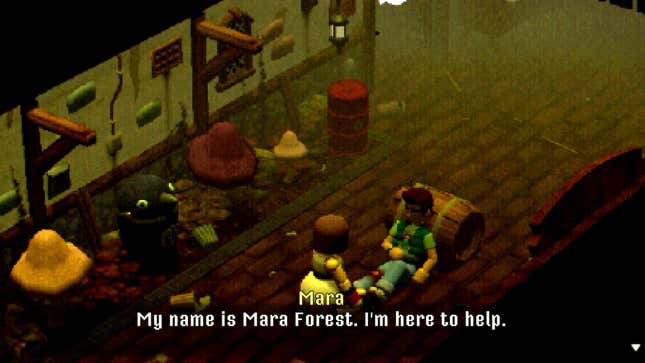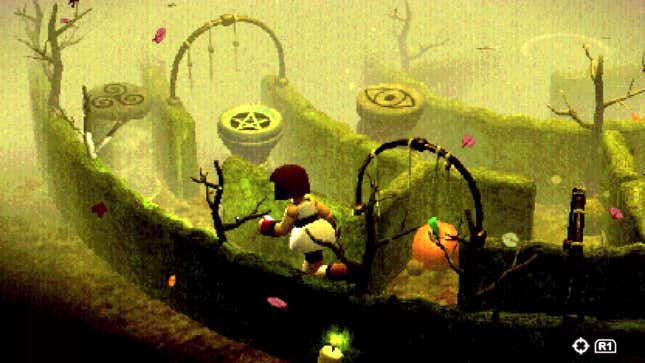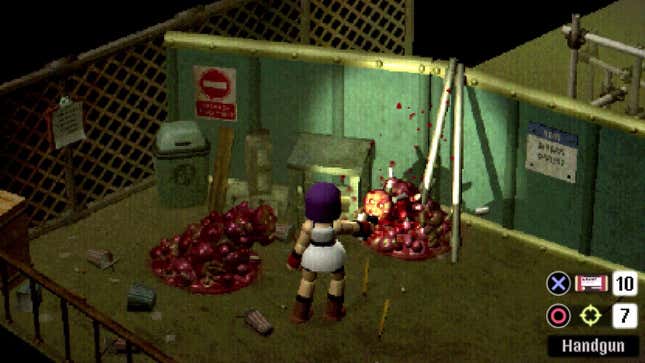Crow Country: The Kotaku Review

Playing retro-inspired games is like returning to a beloved theme park as an adult. Instinctively knowing where to go first, remembering what it was like to be there as a child—it plays to a very specific kind of nostalgia. Retro-inspired games often include familiar mechanics, recognizable art styles, and tropes of a beloved genre or specific title, offering an almost identical experience to the nostalgia of a Disneyland visit. That’s the idea behind Crow Country, the PS1-inspired survival horror title from SFB Games that is aptly set inside of a theme park.
Crow Country wears its influences on its sleeve, lovingly embracing features and elements you’d expect to find in an entry in this genre, from tank controls to item-based puzzles. Unfortunately, its reverence for the games that inspired it (Resident Evil 1 &2, Silent Hill) can hold it back, as Crow Country never quite captures the same magic as the giants of the genre. But even with some of the proverbial rides at this theme park feeling like they could use some work, the game is still a comforting addition to the retro-horror trend.
Imitation is the highest form of flattery

Crow Country’s start doesn’t waste time with pleasantries. Instead, it immediately drops you into the shoes of young detective Mara Forest, as she arrives at the now-abandoned titular theme park. Much like the original Resident Evil, the plot is simple: Mara is there to search for the park’s mysterious owner, Edward Crow. This basic framework means you’re naturally inclined to explore this theme park, and you’ll quickly encounter zombie-like enemies intent on killing you.
To accomplish this singular goal of tracking down Edward Crow, you’ll need to do a lot of puzzle-solving. Like Resident Evil setpieces the Spencer Mansion or the Raccoon City Police Department, Crow Country has a series of complex puzzles that block off swaths of the titular theme park’s four different areas. This forces you to backtrack through the park incrementally as you look for key items that allow you to complete puzzles that can unlock new areas.

All that backtracking is made more engaging by the titular park itself. Crow Country is a fascinating locale. Not only does it play on the inherent eerieness of abandoned theme parks, but the various themes of each area have a unique, unsettling charm to them. The Haunted Hilltop is the best vibe-match for the game thanks to its spooky set dressing, but areas like the underwater-themed Ocean Kingdom and even the less ostentatiously themed hub areas have a distinct sense of dread to them.
While Resident Evil looms incredibly large in Crow Country’s mechanics, narrative, and overall vibes, its visual language references a completely different PlayStation 1 classic—Final Fantasy VII. Like the original FF7, Crow Country renders its characters in an almost chibi-like manner, with the environment similarly small and doll-house-like. At first, I was concerned that the visual style of the game would clash too much with the mechanics and tone, but that was never an issue. Just as the original FF7’s silly aesthetic doesn’t hold back its all-time great story, Crow Country manages to craft a solid survival horror environment despite its seemingly cutesy art style.
Lost in translation

Unfortunately, Crow Country’s use of traditional survival horror mechanics (gunplay, puzzles, and resource management) is less successful. When it comes to gunplay, Mara has a growing arsenal of weapons at her disposal but must stop in her tracks to aim and fire. Like classic games in the genre, it’s a system meant to feel risky, since enemies can get closer to you while you are stuck in place. But Crow Country’s enemies are generally unimportant and can be avoided incredibly easily. Despite the game dropping more and more of them onto the map as you progress, combat never feels like an important pillar of Crow Country, a sense which is solidified by the lack of any real boss encounters.
As for puzzles, Crow Country is inconsistent. A good number of puzzles are simple single-item problems that require the player to just bring the MacGuffin to the right place on the map. These feel mostly like busywork—whenever I encountered them, I found myself desperate for something more complex than just lugging one item to its designated location. There are, however, some more intensive item-based and logic challenges that made me pull out a notebook and pen in the later hours of the game—these were the most satisfying puzzles in the game but felt too few and far between.
Finally, Crow Country’s resource management features squander what might be the most important pillar in survival horror games. Resource management is an essential part of the dread, a mechanical limit on the player’s power that ratchets up the intensity and fear at the right moments. Less room to hold ammunition and healing items means you have to be more careful when dealing with enemies. Crow Country lacks any of that meaningful friction, as I never once found myself lacking resources or unable to hold as much as I wanted. You face very little real threat because of this, and when combined with the lackluster combat it amounts to an often frictionless—and more boring—gameplay experience.
The way Crow Country deploys these mechanics leaves it feeling like a shadow of its inspirations. While it has all the signifiers of classic survival horror, it’s all lacking depth. The visual style, the most unique aspect of the game in how it merges and plays with its inspirations, is the star of the show here. Sadly that can’t make up for the game’s mechanics, which present the survival horror genre’s core pillars without executing them properly. That being the game offers a peculiar experience for fans of the genre, who are the most likely people to pick up Crow Country. It won’t live up to its inspirations but it will still trigger that nostalgic response just enough to make it an enjoyable ride through a simplified—even theme park-ified—version of survival horror.
.
Source link




